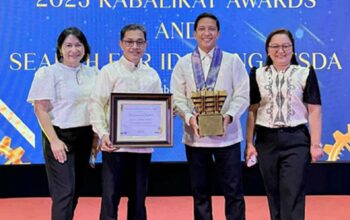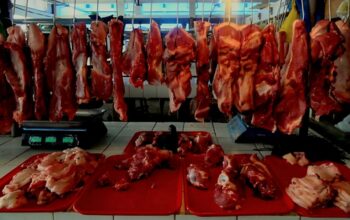BOHOL UNESCO bid, a way to sustainable tourism Bohol’s bid to become a United Nations Educational, Scientific, and Cultural Organization (UNESCO) Global Geopark is projected to boost its sustainable tourism agenda.
“The UNESCO Global Geopark is not only about geology, its purpose is to explore, develop and celebrate the links between geological heritage and all other aspects of the area’s natural, cultural and intangible heritages.” Karl Michael Din, geologist at the Bohol Provincial Environment and Management Office (BPEMO), explained at orientation for groups of collaborators organized for a familiarization tour by the Bohol Tourism Office (BTO).
The Abatan River, one of stops of the tour, is a model for such interconnection with its native flora and fauna where fireflies thrive, making firefly watching and kayaking activities a source of livelihood for the community.
The same is true for Vita Isola, a family vacation home turned into an accommodation establishment that grows its vegetables, practices aquaculture and sources its ingredients from local farmers for the food they serve to guests.
This holistic approach of using geological heritage towards sustainable development bodes well with the province’s vision to be a prime eco-cultural destination, Joanne Pinat, in charge of policy and standards at BTO, said.
The itinerary included visits at the restored churches of Holy Cross Parish in Maribojoc and Birhen Sa Kasilak in Loon, Punta Cruz Tower and the Uplifted Marine Terrace, “Pulang Yuta” in Calape, as well as dolphin and whale watching and snorkeling in Pamilacan Island off Baclayon.
The familiarization tour was organized to further promote sites, create awareness and involve in the local community in geoheritage.
Aside from the protection and conservation of environment and cultural resources, Bohol’s UNESCO Global Geopark aspiration is seen to stimulate socio-economic development.
Bohol, one of 7 aspiring UNESCO Global Geoparks, the Philippines’ first, will join 177 existing geoparks around the world once declared a global geopark. The other six are: Ijen, Indonesia; Maros Pangkep, Indonesia; Aras, Iran; Waitaki Whitestone, New Zealand; Kinabalu, Malaysia; and Khorat, Thailand. These sites are undergoing reevaluation and revalidation, UNESCO’s Global Geoparks Council said.
It stands to not only gain global recognition but also a network of international expertise in conservation, education and tourism. (PIMO/rvo/LM)



